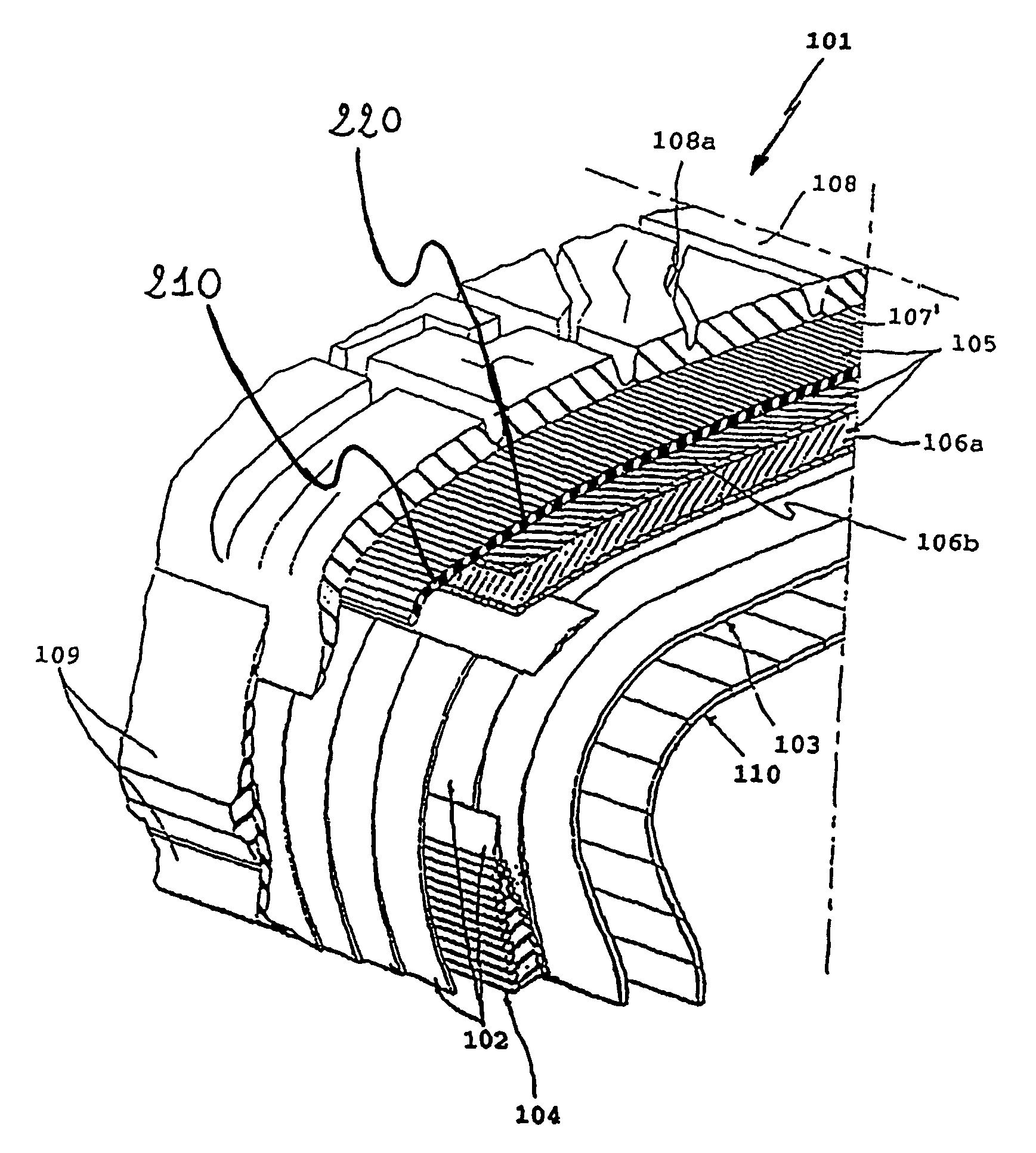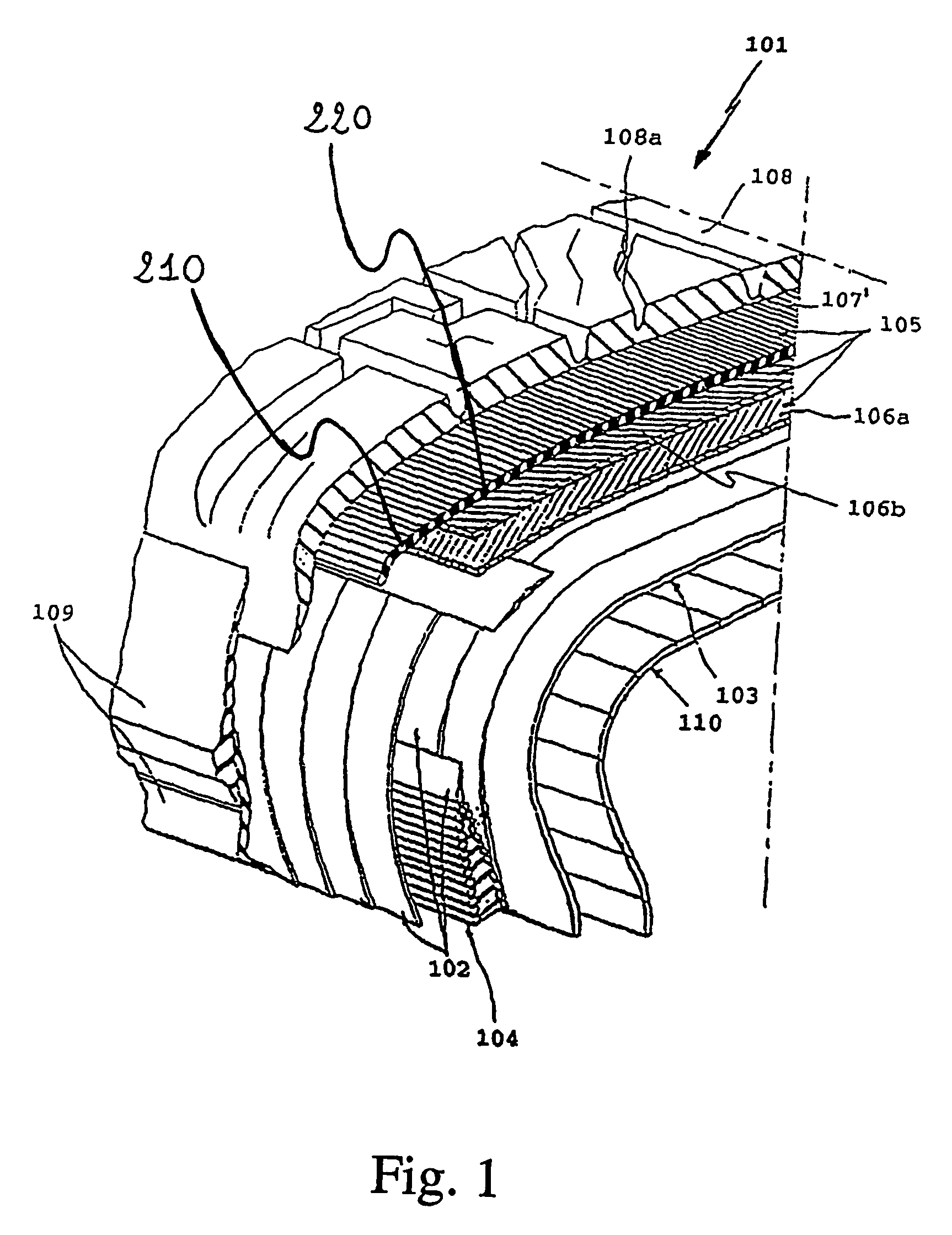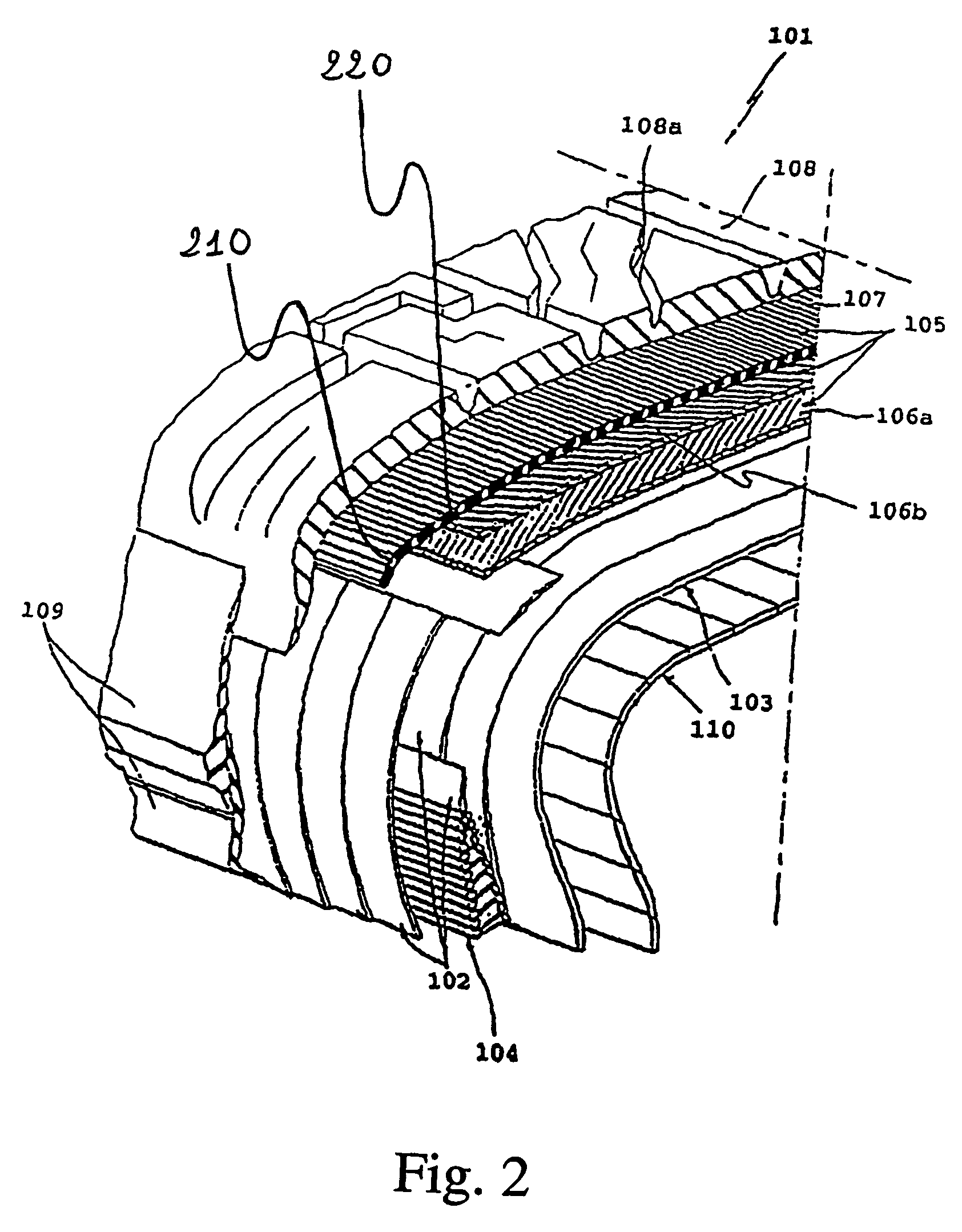Tyre with specified belt structure
- Summary
- Abstract
- Description
- Claims
- Application Information
AI Technical Summary
Benefits of technology
Problems solved by technology
Method used
Image
Examples
example 1
[0092]Five distinct strip-like bands were produced by using the following cords:
[0093]cord A: AR / NY 1670 / 1400 (260 / 70)×260
[0094]cord B: NY 1400 / 2 270×270
[0095]cord C NY 1400 / 1 150Z
[0096]wherein cord A—which is the first elongated element according to the present invention—is a hybrid cord consisting of one aramidic fiber filament (AR) and one filament of Nylon (NY); 1670 is the count (in dTex) of the aramidic fiber filament and 1400 is the count (in dTex) of the filament of Nylon; 260 (in tpm) indicates the twist of the aramidic fiber filament, while 70 (in tpm) indicates the twist of the Nylon filament; ×260 (in tpm) indicates the cord twist.;
[0097]wherein cord B—which is the second elongated element according to the present invention—is a cord consisting of two filaments of Nylon; 1400 is the count (in dTex) of the two filaments of Nylon; 270 (in tpm) indicates the twist of each filament of Nylon; ×270 (in tpm) indicates the cord twist, and
[0098]wherein cord C—which is the second ...
example 2
[0109]Five tyres 1 to 5, having size 235 / 35 R19, were manufactured by using respectively the strip-like bands 1) to 5) of Example 1.
[0110]The tyres 1 to 5 had identical structural elements (e.g. identical carcass, crossed belt plies, bead cores, tread band) but for the 0° belt layer positioned radially external to the crossed belt plies, said 0° belt layer having been produced by using the different strip-like bands of Example 1.
[0111]Furthermore, the 0° belt layers of the tyres 2 to 5 consisted of two layers obtained by spirally winding twice the strip-like bands 2) to 5) respectively, while the 0° belt layer of the tyre 1 consisted of only one layer obtained by spirally winding twice the strip-like band 1).
[0112]Indoor and outdoor testings were carried out on the tyres 1 to 5.
[0113]Indoor Testings
[0114]a) Tyre diameter variation[0115]The tyre was rotated against a road wheel at increasing speeds. In more details, the road wheel was rotated from 20 km / h to 260 km / h; the speed was i...
PUM
| Property | Measurement | Unit |
|---|---|---|
| Fraction | aaaaa | aaaaa |
| Fraction | aaaaa | aaaaa |
| Time | aaaaa | aaaaa |
Abstract
Description
Claims
Application Information
 Login to View More
Login to View More - R&D
- Intellectual Property
- Life Sciences
- Materials
- Tech Scout
- Unparalleled Data Quality
- Higher Quality Content
- 60% Fewer Hallucinations
Browse by: Latest US Patents, China's latest patents, Technical Efficacy Thesaurus, Application Domain, Technology Topic, Popular Technical Reports.
© 2025 PatSnap. All rights reserved.Legal|Privacy policy|Modern Slavery Act Transparency Statement|Sitemap|About US| Contact US: help@patsnap.com



